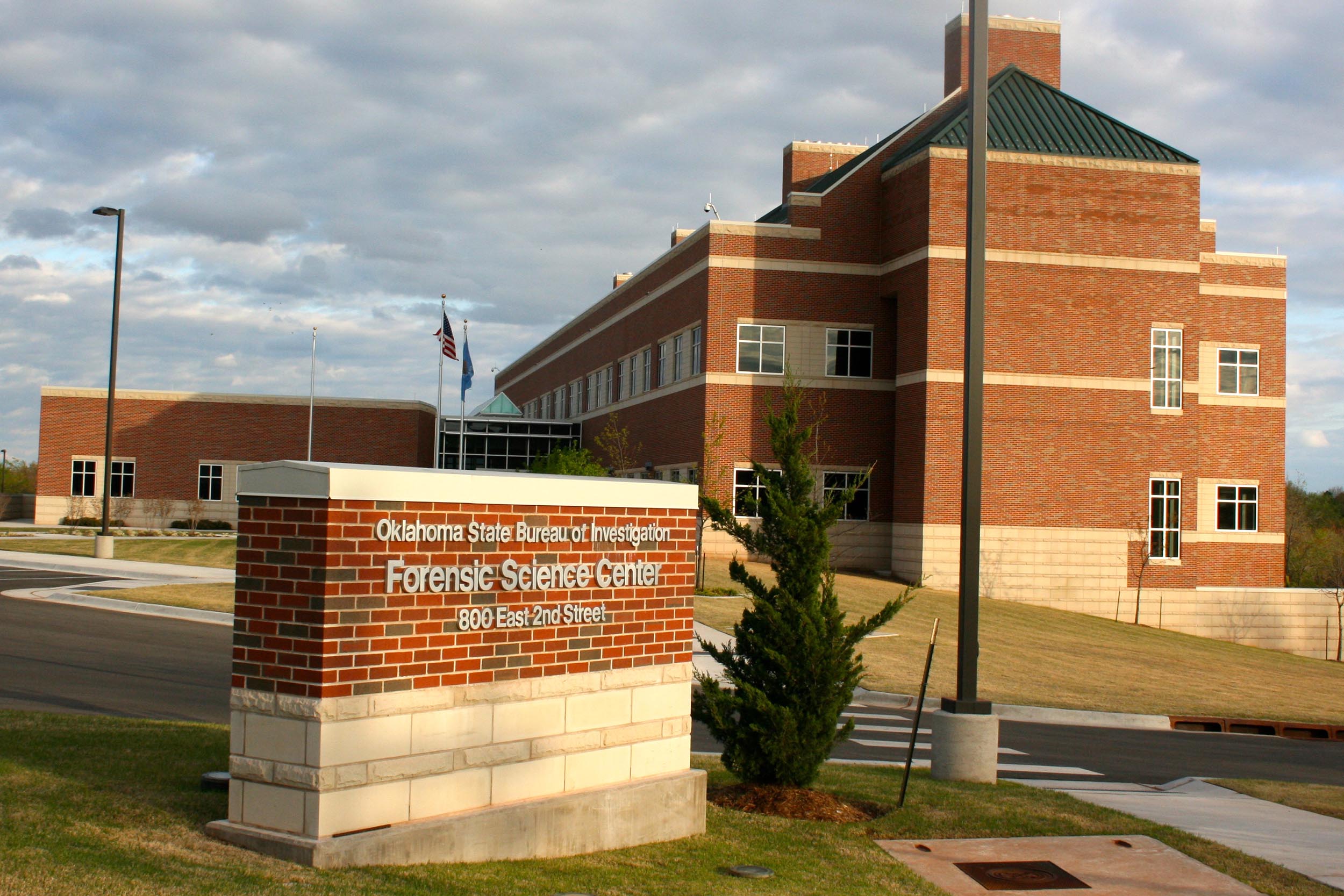|
|
Forensic fiber examinations are conducted to determine if potential associations exist among people, places, or things. Textile fibers are easily transferred when contact occurs between two individuals or between an individual and a crime scene. Examination of fiber transfer can help to establish an association between two or more people or between a crime scene and a person. The instrumentation used in fiber analysis includes the Fourier Transform Infrared Spectrometer (FTIR), Microspectrophotometer (MSP), and various microscopes. |
OSBI Trace Evidence Unit
Trace evidence is based on the principle Edmond Locard developed “Whenever two objects come into contact there is always a transfer of material.” It is recognized as one of the most diverse forensic disciplines as it offers forensic analysis in numerous areas. The OSBI Trace Evidence Section offers analysis in the areas of fiber, paint, physical match, ignitable liquids, pressure tape, and adhesive analysis, gunshot residue, and elemental analysis.
- Fibers
- Paint
- Physical Match
- Fire Debris
- Gunshot Residue
- Pressure Tape and Adhesive Analysis
|
|
Paint evidence can be useful in cases involving automotive or architectural paint. The evidence gathered can be used to determine if paint chips or smears could have originated from a common source. Automotive paint evidence can be analyzed to determine a possible make/model of an automobile with the assistance of the Royal Canadian Mounted Police Paint Data Query (PDQ) database in instances where the suspect vehicle is unknown. The instrumentation used for paint analysis includes the Fourier Transform Infrared Spectrometer (FTIR), Microspectrophotomer (MSP), Scanning Electron Microscope with Energy Dispersive X-Ray Spectrometry (SEM/EDS), and various microscopes. |
|
|
Physical or Fracture match can be thought of as an intricate jigsaw puzzle. The edges of broken or torn objects are used to determine if two or more pieces were once a singular object. Various microscopes and photography techniques can be used to help with a physical match. |
|
|
Fire debris analysis can help determine if an ignitable liquid was present in a fire. The collected fire debris or liquid is analyzed using a Gas Chromatograph / Mass Spectrometer (GC/MS). If an ignitable liquid is found, it is classified using the American Society for Testing and Materials (ASTM), E1618, Committee E-30. It is important to remember that ignitable liquids can be totally consumed in a fire, and a negative finding of ignitable liquids does not mean that ignitable liquids were not used in a fire. Download and review the Ignitable Liquids PowerPoint pdf |
|
|
Gunshot residue is the residue produced from the discharge of a firearm originating from the primer of the cartridge. This residue can be deposited on the hands and clothing of an individual who has discharged or is near someone who has discharged a firearm. This residue can also be transferred to an individual or object. A Scanning Electron Microscope with Energy Dispersive X-Ray Spectrometry (SEM/EDS) is used to identify elements found in the primer mixture of most firearm cartridges and to visualize the shape of the particles. |
|
|
Tape/adhesive analysis is used to determine if a common source exists between two or more items of tape evidence. Physical characteristics, as well as chemical composition and even physical match analysis, can be used in this area. The instrumentation used for tape/adhesive analysis includes Fourier Transform Infrared Spectrometer (FTIR), Microspectrophotomer (MSP), Scanning Electron Microscope with Energy Dispersive X-Ray Spectrometry (SEM/EDS), and various microscopes. |

CSD External Resources
- American Academy of Forensic Science
- ANSI National Accreditation Board (ANAB)
- D.A.R.E.
- Drug Destruction
- Drugs.com Pill Identifier
- K9 Training Aid Destruction
- Trace Evidence Collection Mobile App - Forensic Technology Center of Excellence
- Federal Bureau of Investigation
- Midwestern Academy of Forensic Scientists
- National Forensic Science Technology Center
- National Institute of Justice Programs
- Oklahoma Bureau of Narcotics
- OSBI Employment Process and Opportunities
- Rx Disposal Boxes
- Scientific Working Group for the Analysis of Seized Drugs (SWGDRUG)
- Southwestern Academy of Forensic Scientists
- Title 63. Public Health and Safety
- U.S. Drug Enforcement Administration
Contact
Forensic Science Center
800 East 2nd Street
Edmond, OK 73034
Phone: 405-330-6724
Fax: 405-330-6207
Trace Evidence Unit Supervisor / Technical Manager
Jennifer Dao
Phone: 405-715-9414
Email: jennifer.dao@osbi.ok.gov

